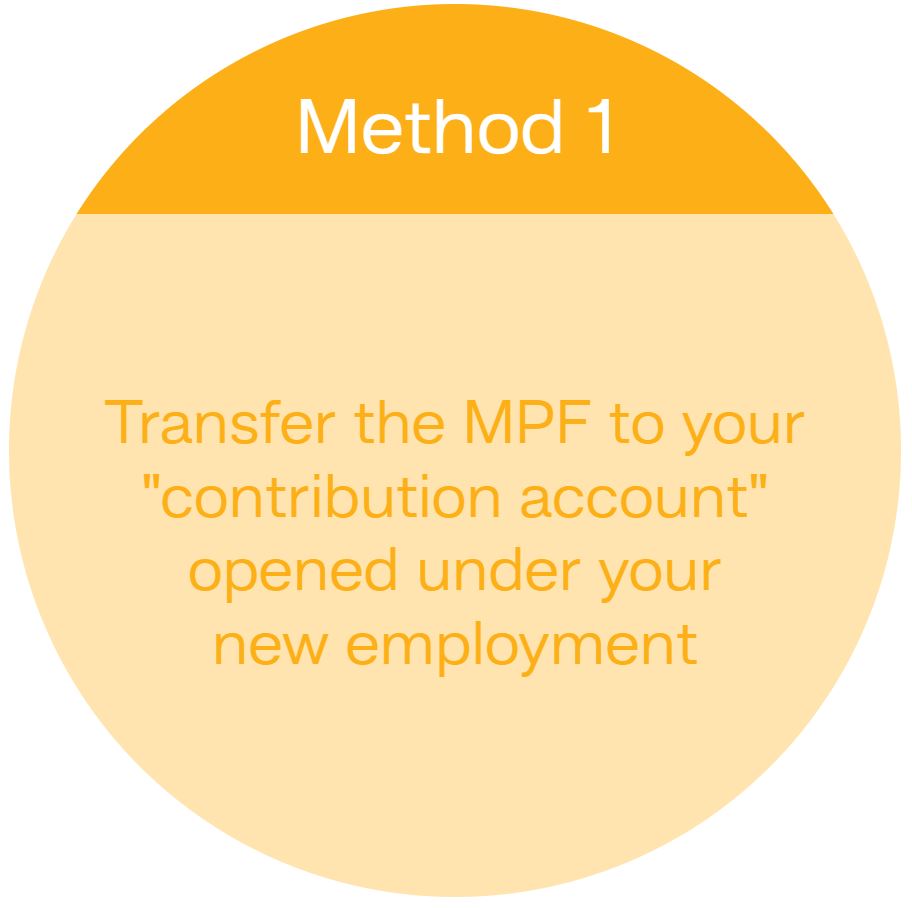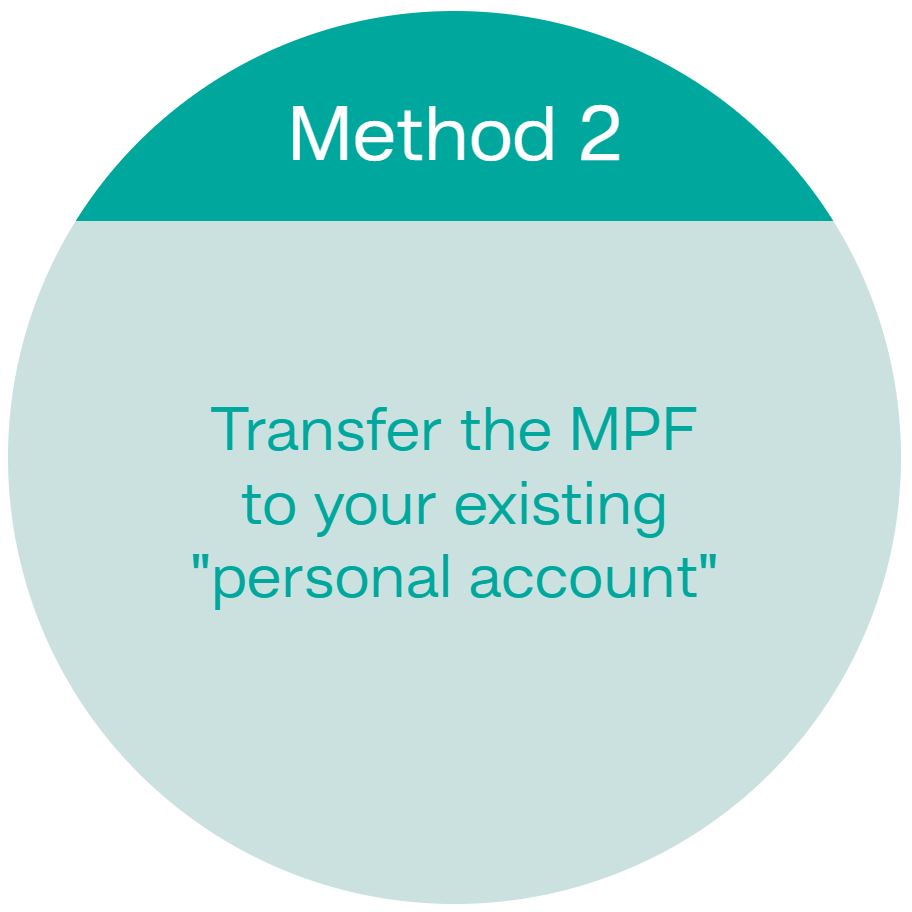|
|
CONTENTS
Why is MPF important to you?
- The Mandatory Provident Fund (MPF) System aims at assisting the working population of Hong Kong to accumulate retirement savings by making regular contributions. Employees (full time or part-time) and self-employed persons aged 18 to 64, except the exempt persons, are required to participate in an MPF scheme. To enrol in BEA (MPF) Value Scheme, please submit the enrolment instructions to the eMPF Platform via the eMPF Web Portal or eMPF Mobile App.
- To facilitate your retirement planning, you may use MPFA's Retirement Planning Calculator to calculate:
i. your retirement needs; ii. your projected MPF and other retirement savings upon your retirement; and iii. how much you need to save to meet your retirement needs.
- If you are an employer, you need to know your MPF obligations, including enrolling new employees, making contributions and reporting terminated employees. If you have any questions relating to your MPF obligations as an employer, please contact the eMPF Platform.
- To become a participating employer of BEA (MPF) Value Scheme, please submit enrolment instructions to the eMPF Platform via the eMPF Web Portal or eMPF Mobile App.
Your MPF contributions
- If you are an employee (full time or part-time), both you and your employer are required to make regular MPF contributions for you, based on your "relevant income" as follows:
| Monthly Relevant Income | Mandatory Contribution Amount | |
|---|---|---|
| Employer's Contributions | Employee's Contributions | |
| Less than HK$7,100 | Relevant income × 5% | Not required |
| HK$7,100 - HK$30,000 | Relevant income × 5% | Relevant income × 5% |
| More than HK$30,000 | HK$1,500 | HK$1,500 |
- "Relevant income" refers to wages, salaries, leave pay, fees, commissions, bonuses, gratuities, perquisites or allowances, expressed in monetary terms, paid or payable by an employer to an employee, but excludes severance payments or long service payments under the Employment Ordinance.
- All mandatory contributions are immediately vested in you, except for the MPF derived from the employer's contributions for offsetting severance payments or long service payments.
- If you are self-employed, you are required to make MPF contributions as follows:
| Relevant Income | Self-employed Person's Contributions | |
|---|---|---|
| Annual | Monthly Average | |
| Less than HK$85,200 | Less than HK$7,100 | Not required |
| HK$85,200 - HK$360,000 | HK$7,100 - HK$30,000 | Relevant income × 5% |
| More than HK$360,000 | More than HK$30,000 | HK$360,000 x 5% = HK$18,000 per year OR HK$30,000 × 5% = HK$1,500 per month |
- Whether you are an employee or self-employed, you may also consider making additional contributions (i.e. voluntary contributions (including additional voluntary contributions) (VC), tax deductible voluntary contributions (TVC) and special voluntary contributions (SVC) in light of your personal needs.
| How to Open an Account | Voluntary Contributions | Tax Deductible Voluntary Contributions | Special Voluntary Contributions |
|---|---|---|---|
| Your employer helps you open an account under the MPF scheme chosen by the company | You select your own MPF scheme and open an account on your own. (Note: some MPF schemes do not provide TVC accounts. You may check the MPF schemes which offer TVC accounts on MPFA's Trustee Service Comparative Platform.) |
You select your own MPF scheme and open an account on your own. (Note: some MPF schemes do not provide SVC accounts. You may check the MPF schemes which offer SVC accounts on MPFA's Trustee Service Comparative Platform.) |
- For details of different types of contributions, you may refer to the Section 6 - Administrative Procedures of the MPF Scheme Brochure for BEA (MPF) Value Scheme:
How do we invest your money?
- Upon joining the scheme, if you have not given us any investment instructions, your money will be invested under the Default Investment Strategy (DIS) automatically. For details of the DIS, you may refer to the Section 3 - Fund Options, Investment Objectives and Policies of the MPF Scheme Brochure for BEA (MPF) Value Scheme:
- Alternatively, you can choose to invest in the following funds:
| No. | Name of Constituent Fund | Investment Manager | Fund Descriptor | Investment Focus | Investment Objectives | Management Fees (As a percentage of net asset value per annum) |
|---|---|---|---|---|---|---|
| 1 | BEA Core Accumulation Fund | BEA Union Investment Management Limited | Mixed Assets Fund - Global - Maximum 65% in Higher Risk Assets | 55% to 65% in Higher Risk Assets with the remainder invested in Lower Risk Assets | To provide capital growth | 0.75% |
| 2 | BEA Age 65 Plus Fund | BEA Union Investment Management Limited | Mixed Assets Fund - Global - Maximum 25% in Higher Risk Assets | 15% to 25% in Higher Risk Assets with the remainder invested in Lower Risk Assets | To provide stable growth | 0.75% |
| 3 | BEA Growth Fund | BEA Union Investment Management Limited | Mixed Assets Fund - Global - Maximum 90% in equities | 60% to 90% in equities, 10% to 40% in cash, debt securities and/or money market instruments | To achieve long-term capital appreciation | 0.9% |
| 4 | BEA Balanced Fund | BEA Union Investment Management Limited | Mixed Assets Fund - Global - Maximum 60% in equities | 40% to 60% in equities, 40% to 60% in cash, debt securities and/or money market instruments | To achieve a stable rate of return | 0.9% |
| 5 | BEA Stable Fund | BEA Union Investment Management Limited | Mixed Assets Fund - Global - Maximum 40% in equities | 10% to 40% in equities, 60% to 90% in cash, debt securities and/or money market instruments | To minimise short-term capital risk with modest capital growth over the long term | 0.9% |
| 6 | BEA Global Equity Fund | BEA Union Investment Management Limited | Equity Fund - Global | Not less than 70% in equities, with the remainder held in money market instruments, cash or cash equivalents | To provide long-term capital growth | 0.9% |
| 7 | BEA Asian Equity Fund | BEA Union Investment Management Limited | Equity Fund - Asia ex-Japan | At least 70% in equities, up to 30% in cash, debt securities and/or money market instruments | To achieve long-term capital appreciation | 0.9% |
| 8 | BEA Greater China Equity Fund | BEA Union Investment Management Limited | Equity Fund - Greater China | Not less than 70% in equities, up to 10% in other securities (as permitted under the General Regulation) with the remainder held in cash or cash equivalents | To provide long-term capital growth | 0.9% |
| 9 | BEA Hong Kong Tracker Fund | BEA Union Investment Management Limited | Equity Fund - Hong Kong | 100% in equities | To provide investment returns that closely correspond to the performance of the Hang Seng Index | Up to 0.69% |
| 10 | BEA Global Bond Fund | BEA Union Investment Management Limited | Bond Fund - Global | 20% to 100% in short to long term government bonds, 0% to 80% in short to long term corporate bonds | To provide total investment return over the medium to long term | 0.9% |
| 11 | BEA MPF Conservative Fund | BEA Union Investment Management Limited | Money Market Fund - Hong Kong | 100% in short-term deposits and debt securities | To achieve a minimum rate of return while maintaining stability of the principal amount invested | 0.79% |
| Note - |
The management fees shown in the table above include the management fees chargeable by the fund and its underlying fund(s) only. There may be other fees and charges chargeable to the fund and its underlying fund(s) or to you. For details, please refer to the Section 5 - Fees and Charges of the MPF Scheme Brochure for BEA (MPF) Value Scheme:
To help you make comparisons across different MPF funds and schemes, you may refer to the information on the MPFA's MPF Fund Platform:
|
What are the risks of your MPF investment?
Investment involves risks. Please refer to the Section 4 – Risks of the MPF Scheme Brochure for BEA (MPF) Value Scheme for details of the risk factors to which the funds are exposed:
 MPF Scheme Brochure
MPF Scheme Brochure
 MPF Scheme Brochure
MPF Scheme Brochure A risk class is assigned to each fund with reference to a seven-point risk classification scale based on the latest fund risk indicator of the fund. A fund in a higher risk class tends to show a greater volatility of return than a low-risk class fund. Information about the latest risk class of each fund is set out in the latest fund fact sheet (FFS) of BEA (MPF) Value Scheme:
 Fund Performance - Fund Fact Sheet
Fund Performance - Fund Fact SheetHow to transfer your MPF?
If you are an employee, you may opt to transfer your MPF derived from employee mandatory contributions in your contribution account under current employment (Original Scheme) to any other MPF schemes of your choice (New Scheme) once a year1. If your transfer involves selling your interests in a guaranteed fund, please check with the trustee of your Original Scheme about the terms and conditions of this fund as failure to fulfil some qualifying conditions may cause the loss of guaranteed returns. Your contribution account under current employment may consist of different parts of MPF derived from different sources and subject to different transfer rules, as follows:
| Parts of MPF in a Contribution Account (i.e. Types of contributions that the MPF are derived from) | Transfer Rule | Type of Account Receiving the MPF |
|---|---|---|
| Contributions from Current Employment | ||
| Employer mandatory contributions | Not transferable | - |
| Employee mandatory contributions | Transferable once every calendar year1 | Personal account |
| Employer voluntary contributions | Subject to the governing rules of the Original Scheme | |
| Employee voluntary contributions | ||
| Contributions from Former Employment | ||
| Mandatory contributions transferred to the contribution account under current employment | Transferable at any time | Personal account or other contribution accounts2 |
| Voluntary contributions transferred to the contribution account under current employment | Subject to the governing rules of the Original Scheme | |
If you are a self-employed person or tax deductible voluntary contribution (TVC) account holder, you can transfer your MPF held in your MPF contribution account, personal account or TVC account to any other MPF schemes of your choice at any time.
| 1 Unless the governing rules of the Original Scheme provide for more frequent transfer-out. |
| 2 Only applies to employees with two or more contribution accounts. If an employee is employed by more than one employer at the same time, he/she may have more than one contribution account. |
How to manage your MPF when changing jobs?
- You should proactively manage the MPF accumulated during your previous employment in one of the following ways:


- If you do not have any personal accounts, and you are satisfied with the MPF scheme chosen by your former employer, you may consider retaining your MPF in a personal account under the scheme of your previous employment for investment.
- For transfer of MPF, transfer instruction can be submitted to the eMPF Platform via the eMPF Web Portal and eMPF Mobile App.
- If you have any questions relating to transfer of MPF, please contact the eMPF Platform.
When should you adjust your MPF fund choices?
In general, it is a good practice to review your fund choices regularly and adjust your MPF fund choices as you think fit.
How to adjust your MPF fund choices?
- You may complete and submit a new investment instruction to the eMPF Platform. If your new investment instructions involving selling your interests in a guaranteed fund, please check with us the terms and conditions of this fund as failure to fulfil some qualifying conditions may cause the loss of guaranteed returns.
- You may send your new investment instructions to eMPF Platform via the eMPF Web Portal or eMPF Mobile App.
- A valid change of investment mandate should be sent to us via instruction to the eMPF Platform by 4:00 pm on a Valuation Date in order for it to be processed within the normal processing time. For details, please visit the eMPF Web Portal or the eMPF Mobile App:
When can you withdraw your MPF?
- Once you reach the age of 65, you can choose to withdraw your MPF or choose to retain your MPF in the MPF Scheme.
- By law you can withdraw your MPF early on the following six grounds:
 |
 |
 |
| Early Retirement | Terminal Illness | Permanent Departure from Hong Kong |
 |
 |
 |
| Total Incapacity | Death | Small Balance |
- If you withdraw your MPF at the age of 65 or 60 upon early retirement, you may choose to withdraw either in one lump sum or by instalments.
- The law does not stipulate any deadlines for withdrawing MPF. You should consider your personal needs before making a withdrawal application. If you choose to retain all your MPF in your account, no application is required. Your MPF will continue to be invested in the fund(s) you have selected.
- For withdrawal of MPF, withdrawal instruction can be submitted to the eMPF Platform via eMPF Web Portal and eMPF Mobile App:
- If you have any questions relating to withdrawal of MPF, please contact the eMPF Platform.
Additional information useful to you
Taxation
Employees are allowed to claim salaries tax deduction for their mandatory contributions, subject to a maximum deduction of HK$18,000 per year. Contributions that are made to TVC accounts may also be eligible for tax deduction. We recommend that you seek professional advice regarding your own tax circumstances.
Documents from us
Scheme members will receive the following documents via the eMPF Platform:
1. upon joining the BEA (MPF) Value Scheme: this KSID, the MPF Scheme Brochure and the Notice of Participation
2. within three months after the scheme year end: the Annual Benefit Statement
Other information
This KSID only provides a summary of the key features of BEA (MPF) Value Scheme. For details of BEA (MPF) Value Scheme, please refer to the trust deed and the MPF Scheme Brochure for BEA (MPF) Value Scheme. Copies of these documents are available:
The On-going Cost Illustrations for BEA (MPF) Value Scheme, a document which illustrates the on-going costs on contributions to funds in BEA (MPF) Value Scheme:
The Fund Fact Sheets provide basic information (e.g. fund performance) on individual funds of BEA (MPF) Value Scheme. Copies of these documents are available on the Fund Performance page:
Personal Data Statement
To obtain the latest copy of the "Privacy Policy Statement", please write to (i) the Group Data Protection Officer by post to The Bank of East Asia Group, 10 Des Voeux Road Central, Hong Kong, or (ii) BEA Trustees' Individual Data Protection Officer by post to 32nd Floor, BEA Tower, Millennium City 5, 418 Kwun Tong Road, Kowloon, Hong Kong.
How to make enquiries and complaints?
If you would like to make an enquiry or a complaint, please feel free to contact the eMPF Platform.
| eMPF Customer Service Hotline | 183 2622 Opening Hours: Monday to Friday: 9:00 am – 7:00 pm Saturday: 9:00 am – 1:00 pm Sunday & Public Holiday: Closed |
|---|---|
| eMPF Service Centres | Hong Kong Island Unit 601B, 6/F, Dah Sing Financial Centre, No. 248 Queen's Road East, Wanchai, Hong Kong Kowloon Suites 1205-6, 12/F, Chinachem Golden Plaza, No. 77 Mody Road, Tsim Sha Tsui East, Kowloon New Territories Suite 1802A, 18/F, Tower 2, Nina Tower, No. 8 Yeung Uk Road, Tsuen Wan, New Territories Service hours: Monday to Friday: 9:00 am – 6:00 pm Saturday: 9:00 am – 1:00 pm Sunday & Public Holiday: Closed |
| Fax | 3197 2922 |
| Postal Address | PO Box 98929 Tsim Sha Tsui Post Office |
| Email Address | enquiry@support.empf.org.hk |
| Website | www.eMPF.org.hk |
To access the PDF version of Key Scheme Information Document for BEA (MPF) Value Scheme, please download the document below.
 Key Scheme Information Document
Key Scheme Information Document 
 MPFA's Retirement Planning Calculator
MPFA's Retirement Planning Calculator





